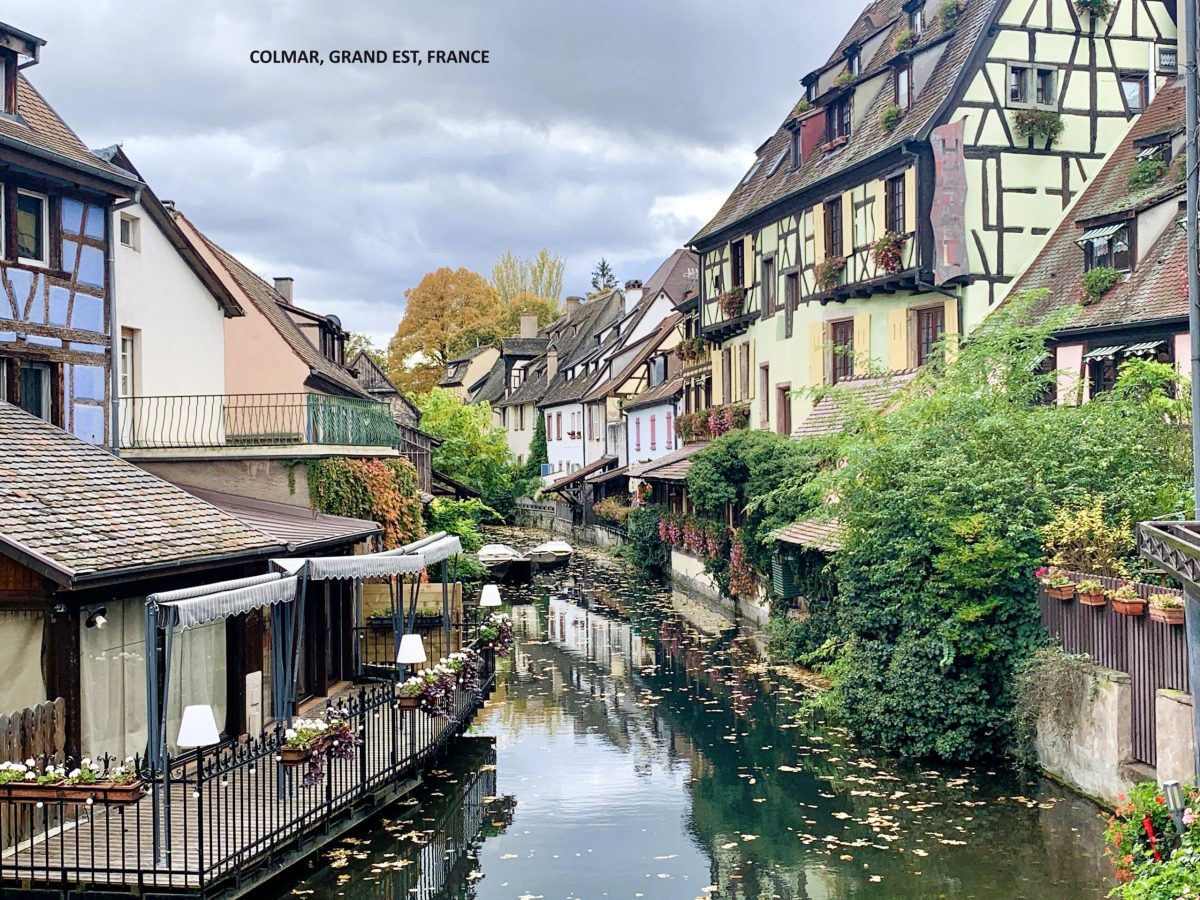We continue to potter around Aragon and the area continues to amaze us. We had not heard of Teruel but with it being just 25 miles east of Albarracin we thought we’d check it out and have lunch there before heading across to La Rioja.
Teruel, capital of Teruel Province, is a relatively small city (less than 35,000 inhabitants) but despite it’s limited size it is packed with places of interest and beauty. Given that it was a major Moorish city, it comes as no surprise to see so much Mudejar architecture but the quality of that architecture is as good as anywhere in Spain. The cathedral tower, together with the towers of San Salvador, San Martin and San Pedro are rare jewels and have rightly earned Teruel recognition as a World Heritage Site.
Parking our Van close to the city’s railway station, we made first for the nearby old town and came across the Escalinata del Ovalo. Built in Mudejar style, this grand old staircase was actually built in the early part of the 20th century but it’s mix of bricks and tiles is remarkable and a fine introduction to the more genuine Mudejar monuments in Teruel. I walked it with Nala. Vanya and Beanie took the elevator.
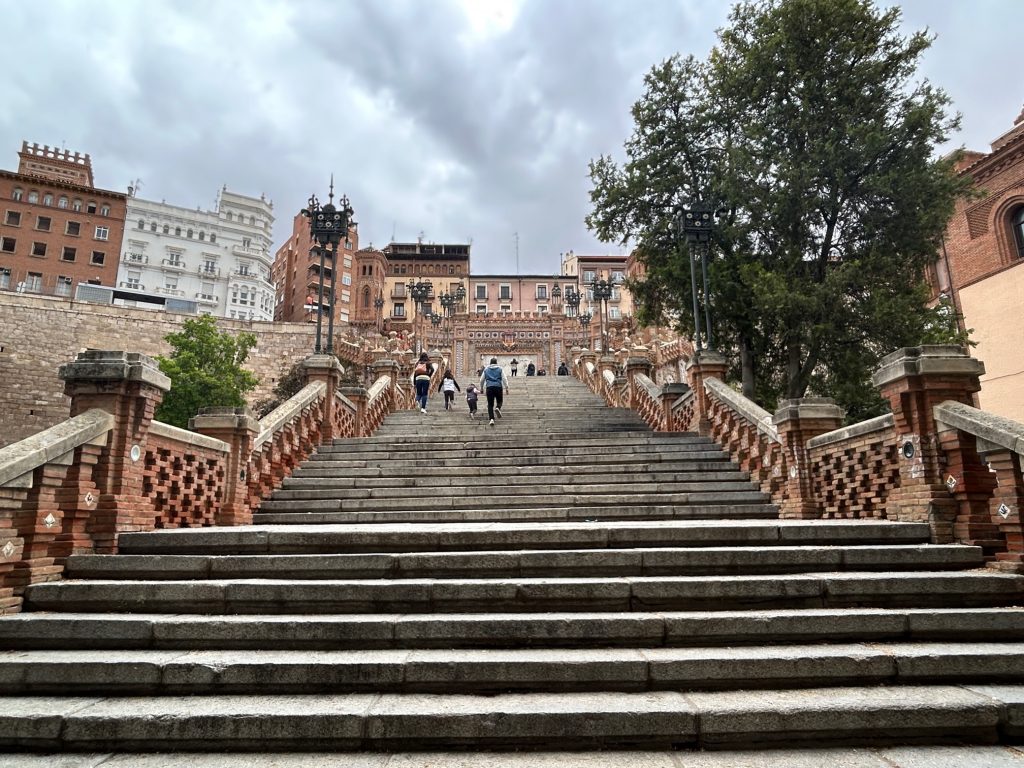
Teruel’s grand staircase (Escalinata del Ovalo) which connects the railway station with the old town.
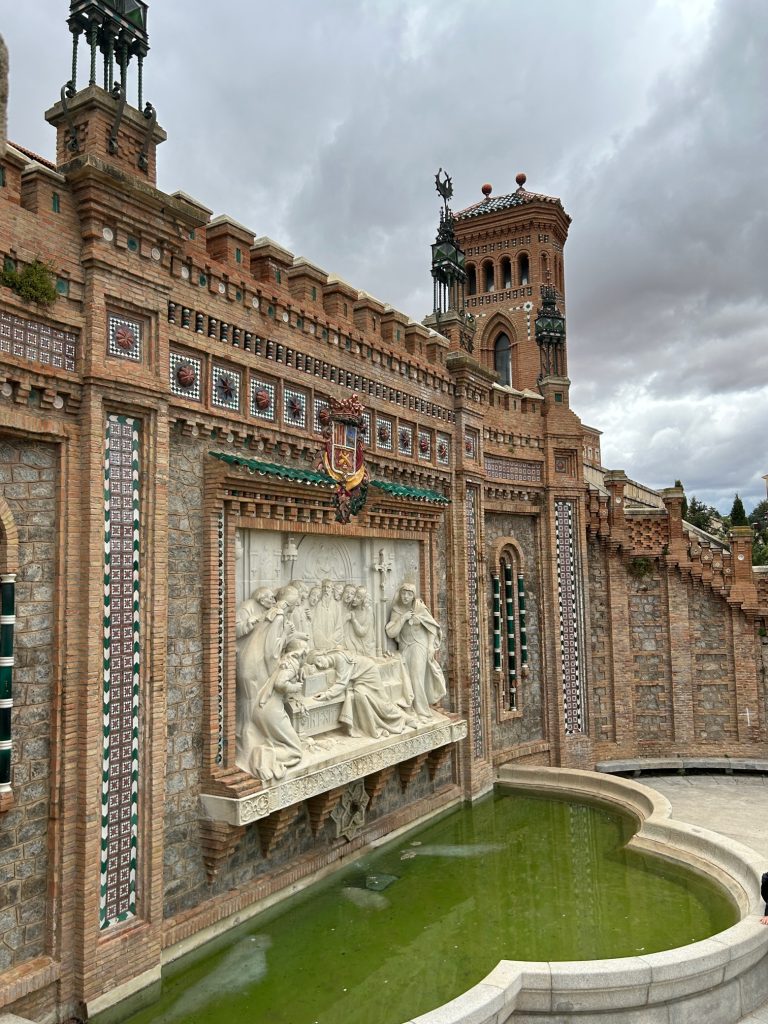

The carving at the top of the Escalinata del Ovalo depicts a scene from the legend of the Amantes – more of that below.
The top of the staircase is just moments from the first of Teruel’s Mudejar Towers, the Torre de El Salvador. Unlike the stairs, this beautifully coloured bell tower, decorated with patterned tiles, is original Mudejar architecture. The Tower was closed to the public as we arrived or I would have climbed it for the views over the town.
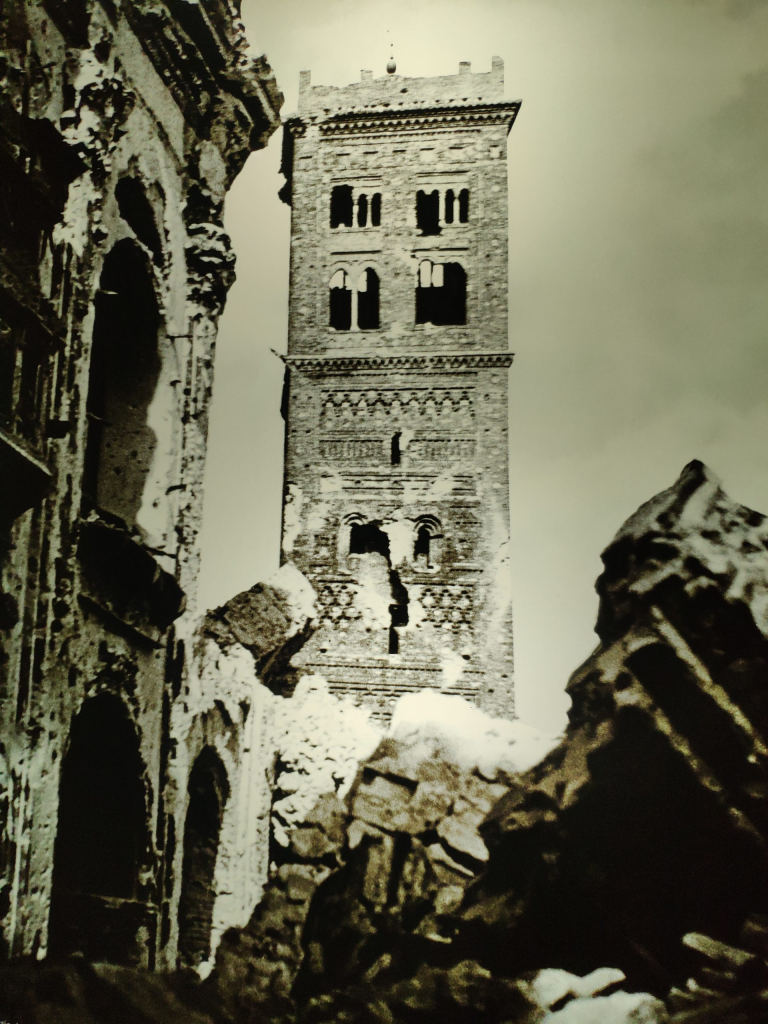
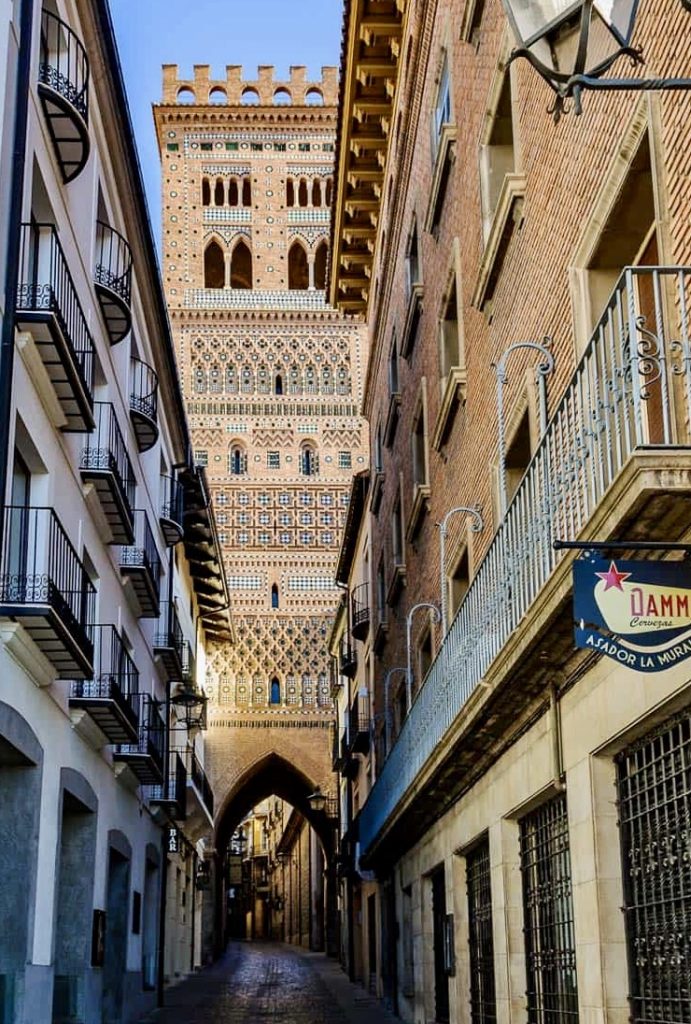
These photos of the Torre El Salvador are not mine The photo on the left was taken before the Tower’s restoration in the 1990’s when it was faithfully restored.
The San Martin Tower is similar to the El Salvador but (supposedly) a little less spectacular. I can’t say that I noticed any significant difference between the two except that it was easier to take photographs of San Martin Tower because it isn’t situated in such a built up area.
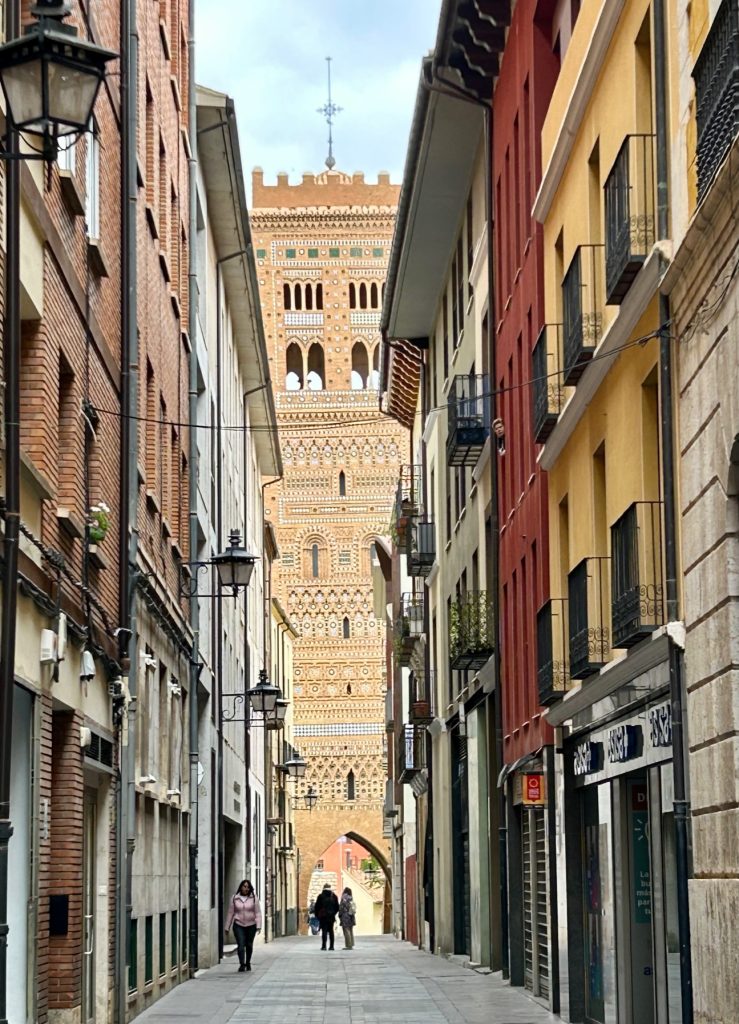

San Martin Tower.
Another “must see” sight in Teruel and yet another impressive example of Mudejar architecture is to be found in the largely Gothic Catedral de Santa Maria de Mediavella. The roof especially is made in Mudejar style. The cathedral was built in the 12th century in a Romanesque style but received a Gothic-Mudejar makeover in the 13-14th centuries and was transformed into the building it is today.
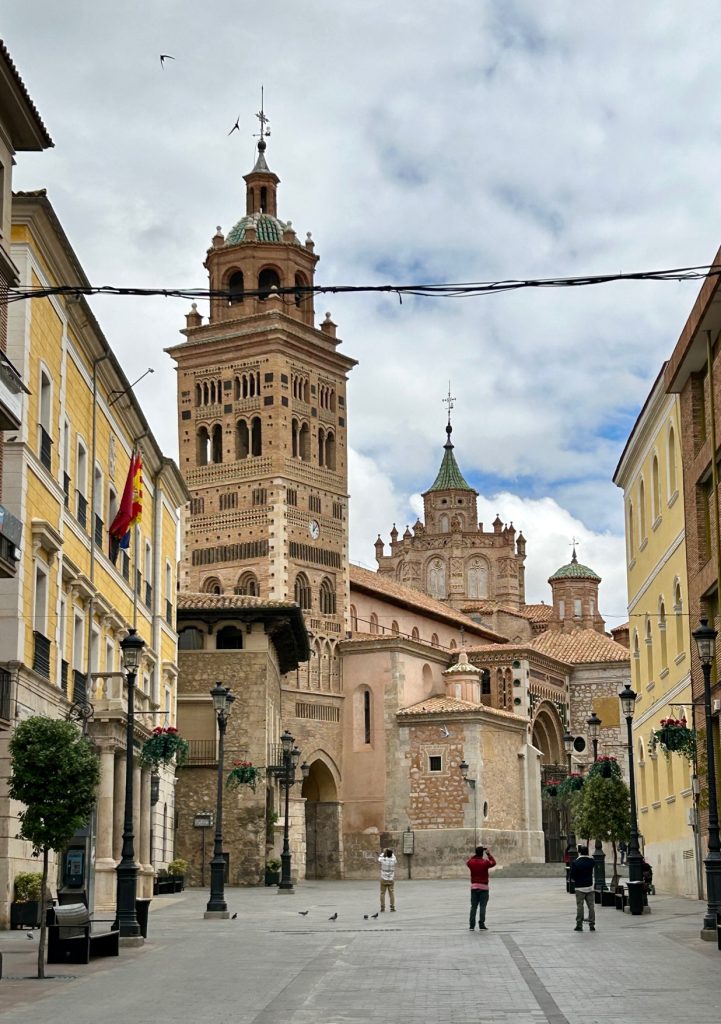

A couple of photographs of the outside of the Catedral de Santa Maria de Mediavelle de Teruel…
The cathedral is stunning from almost every vantage point and nowhere more so than on the inside of the building where there are a number of important religious paintings, a 16th century wooden Baroque altarpiece and a particularly outstanding coffered Mudejar ceiling. Designed by Mudejar artists in the 13th century, the 32 metre long vaulted ceiling has detailed Islamic style carvings of medieval scenes and figures and has been referred to as the “Sistine Chapel” of Mudejar.

… and a photo of the inside of the ceiling.
The final Mudejar Tower, built very much in the style of the San Salvador and San Martin Towers belongs to the church of San Pedro and this is worth visiting to see it’s ceiling alone but there’s another reason to visit San Pedro’s. It has a famous legend which is worth following up on – the Legend of the “Amantes” or the “Lovers of Teruel”.
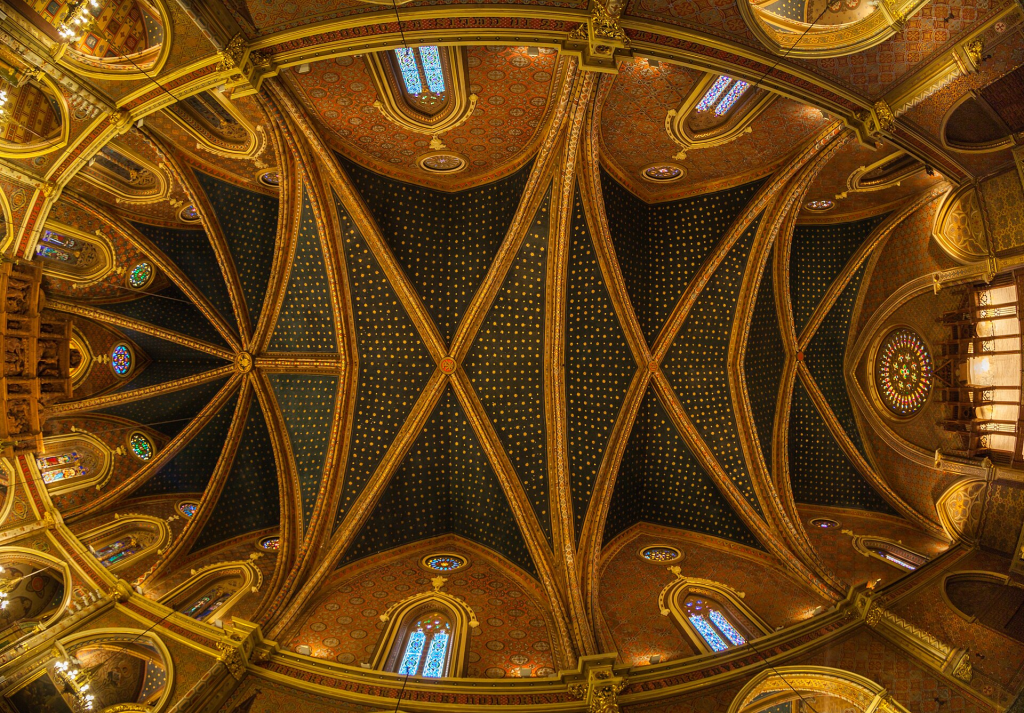
The ceiling of San Pedro’s
I’m aware of two different versions of the legend and both bear some similarity to Shakespeare’s Romeo and Juliet. There are probably many more versions but the one I favour is as follows:-
In 1217, Juan Diego Garces de Marcilla and Isabel de Segura lived in Teruel. They were lovers. Diego was a second son and as such unlikely to receive much of an inheritance while Isabel was the only child of a very wealthy nobleman by the name of Don Pedro de Segura. Despite their deep affection for each other, the romance between Diego and Isabel was doomed unless Diego could prove to Don Pedro that he was worthy of his daughter. Diego persuaded Don Pedro to agree to the marriage if he could win fame and fortune within a five year time frame. Promising Isabel that he would return to marry her, Diego then went off to war to win the required fame and fortune.
During the following five years Isabel heard nothing from Diego but she waited patiently for him; turning down countless suitors and frustrating all efforts of her father to marry her off to another. Meanwhile, Diego was caught up in the war against the Muslims to the south. He failed to return to Teruel before the end of the fifth year and Don Pedro wasted no time in arranging an alternative marriage for his daughter which took place immediately the five years was up.
Diego returned from the war rich and famous but he was too late. Isabel had been compelled to marry a man from nearby Albarracin just two days earlier. Devastated, Diego went to Isabel and begged, “bésame, que me muero” (“kiss me, for I am dying”). Isabel refused, saying she was now a married woman. He asked a second time for a final kiss but again she denied him and Diego died at her feet, there and then, of a broken heart.
At Diego’s funeral the following day, in total silence, Isabel arose from her seat in the church, walked to Diego’s open coffin and gave him in death the kiss she had denied him in life. She then fell dead. Much moved by Isabel’s expression of love, the families agreed to bury the two lovers side by side in the Church of San Pedro.

An alabaster statue of Diego and Isabel in the Church of Saint Pedro over the spot where their bodies are interred.
Anyway, after a pleasant walk around a most interesting city, we made our way back towards the small Plaza del Torico. We’d passed through there earlier in the day while exploring the old town and it seemed a very popular square and an ideal place to stop for a pinxtos lunch. The plaza is home to quite a few cafe bars and the one we stopped at did a pretty good “Delicias de Teruel”. This translates to “Delicacies of Teruel” and it comprises Teruel’s own Serrano Ham with warm toasted bread and a fresh tomato jam. Needless to say, we enjoyed it with a glass of the local wine.
Plaza del Torico is named after a small sculpture of a bull (the emblem of the city) which sits atop a tall column in the centre of the square but one could be forgiven for overlooking the almost pocket sized bull on a square that has an impressive fountain and some really progressive looking buildings. The most thought provoking of these buildings is the Casa de Tejidos El Torico (which houses the Caja Rural De Teruel). Tejidos is Spanish for fabrics (or weaving) but I think a more appropriate name would be the Casa de Josiah Wedgwood. The facade to the building is not made of porcelain but you cannot tell me that those blue and white colours are not pure Wedgwood…
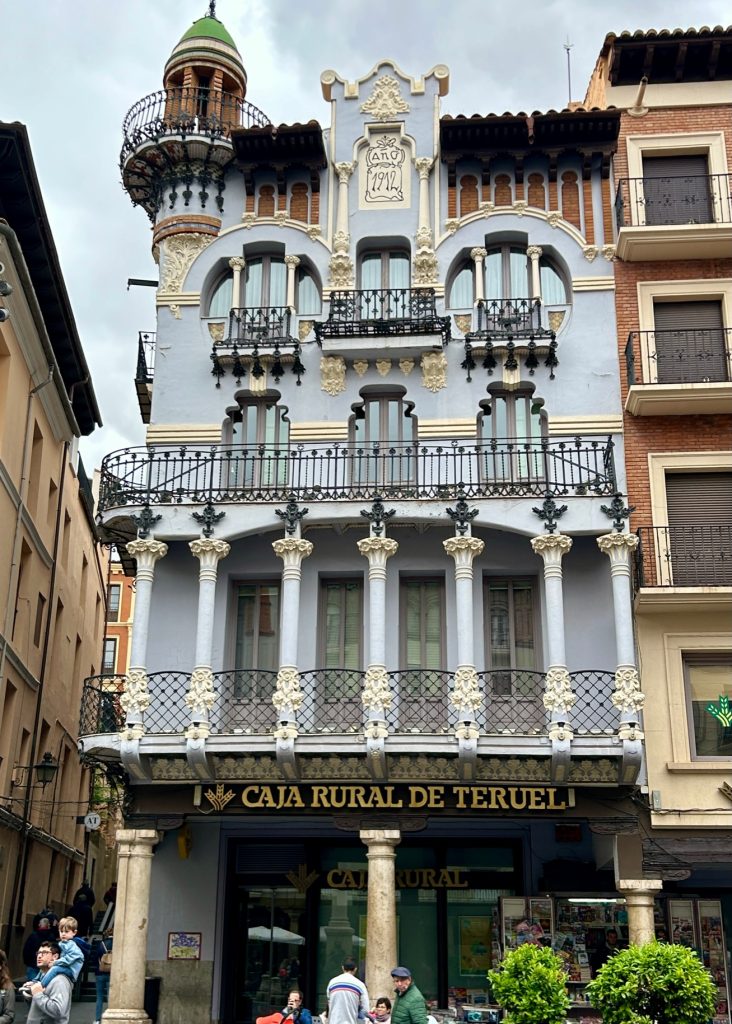
Casa de Tejidos El Torico aka the Casa de Josiah Wedgwood
There’s another square, Plaza Juderia, where there appeared to be a few decent looking cafe bars serving the local ham but they will have to wait until we next return to Teruel. Certainly, I would be keen to return to this lovely little city. I would like to climb one of those beautifully decorated towers for a closer look and I would like to walk the 16th century aqueduct (Acueducto de los Arcos) which connects the historic old town to the more modern part of the city in the north. The aqueduct is visible from many parts of the town but I simply didn’t have time to find the approach to the lower level walkway.
We’ll be back.

